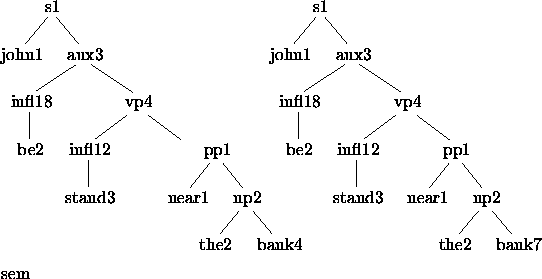
Figure 5.6: Derivation trees
We hypothesize that a good way to characterize the location of the ambiguity of an utterance is by referring to the notion `derivation tree'. We are assuming that the underlying grammar formalism comes with a notion `derivation tree' which represents how a certain derivation is licenced by the rules and lexical entries of the grammar. Note that such a derivation tree does not necessarily reflect how the parser or generator goes about finding such a derivation for a given string or logical form.
We assume that a derivation tree is represented as part of the feature structure of a linguistic sign as introduced in chapter 3, section 3.3. However for convenience, we will represent derivation trees using the well-known tree-like representation.
For example, the derivation trees for the two readings of `John is standing near the bank' may look as in figure 5.6. The intuition that the ambiguity of this sentence is local is reflected in these derivation trees: the trees are identical up to the difference between bank4 and bank7.